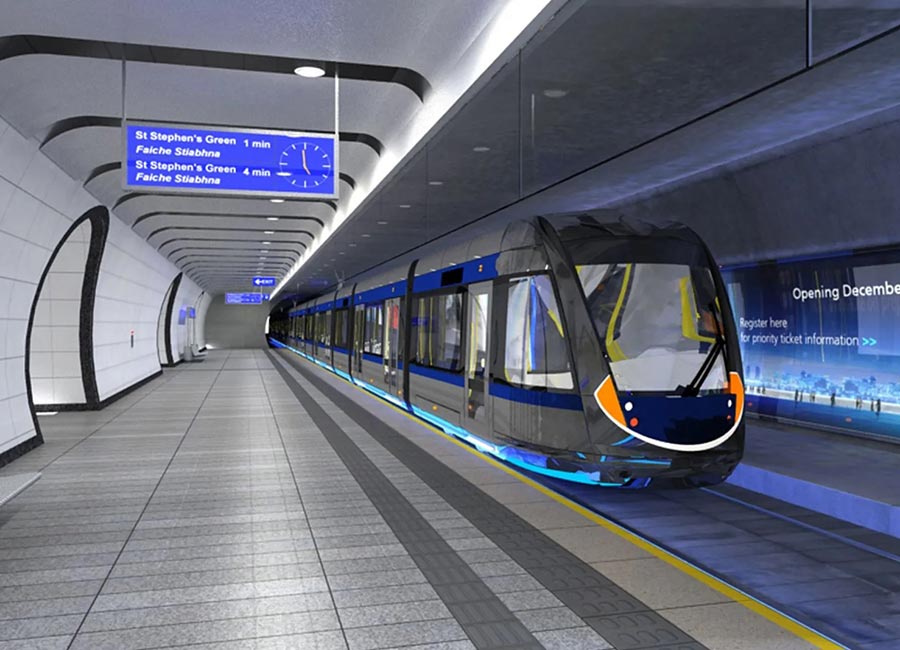Ireland will need an extra 80,000 workers to build the houses needed and to complete the "enormously ambitious" National Development Plan at the same time, the Economic and Social Research Institute (ESRI) has warned.
Total employment is already expected to increase by 40,000 but the economy will need twice that number to deliver National Development Plan (NDP) projects. Those projects include the MetroLink to Dublin Airport, the Dart extension and investments in renewable energy and energy efficiency.
However, the ESRI economic think-tank described achieving such a surge in workers during a period of high employment as "inconceivable" in the short term.
The economy is expected to grow by 4.6% and exports by 5.4% this year. Next year, economic growth is forecast to grow by 2.9% and exports by 3.3%.
However, the ESRI warned: "If trade wars between the US and its trading partners intensify, this forecast will need to be revised downwards."
ESRI economic commentary report author Professor Alan Barrett said: "The economy continues to perform well and the ongoing increase in the numbers employed in Ireland is very welcome.
"However, it is difficult not to be unsettled by global uncertainties. While the headline public finance figures appear healthy, the fact that Ireland is running a fiscal deficit, once the headline numbers are corrected for windfall revenues, appears risky."
Co-author Conor O'Toole said: "Despite the clouded international outlook, the domestic Irish economy appears to be performing robustly.
"Capacity issues in infrastructure and housing are likely to constrain long-term growth and need continued emphasis in terms of public expenditure."
Housing completions are forecast to hit 33,000 this year up from 30,330 in 2024 and grow to 37,000 next year. However, the forecasts are a downgrade from previous estimates for this year blaming labour shortages.
Professor Barrett added: "We're seeking to achieve that increase in housing output while at the same time trying to deliver an enormously ambitious NDP and again all of these things are laudable.
"If you were to get housing up from about 30,000 to 50,000, you could require about 40,000 additional construction employees.
"It's also the case that if you were to complete the entire NDP, you could be looking at 80,000 additional employees.
"It is simply inconceivable for us, or at least extremely difficult to conceive, how such increases in labour can actually be attained over the short run and in even the medium run."
The employment bottleneck means the ESRI is "cautious on the overall capacity of the economy to deliver that sort of infrastructural increases." It warns that the government will have to look at prioritising some areas of the NDP over others.
Prof Barrett said: "Think about what are going to be the labour demands at any given point in time and is it possible to sequence things in such a way that you don't have a situation in which one arm of the NDP in a sense is competing against an additional arm of the NDP for labour resources."
The ESRI report added: "This represents a reduction from our previous forecast for the current year reflecting the first quarter outturn and the ongoing structural challenges including production costs, supporting infrastructure, financing and labour shortages."
The unemployment rate is projected to remain close to 4% but the "relatively strong domestic economy" faces two primary challenges as tax revenues are heavily dependent on windfall corporation tax receipts and residential construction is not accelerating sufficiently."
It warned: "A dip in corporate tax revenues in May served as a reminder of the potential vulnerability in the public finances due to the importance of this windfall source of revenue.
"Expenditure, which is increasing faster than planned in Budget 2025, has increased considerably relative to the size of the domestic economy in recent years.'
Chambers Ireland chief Ian Talbot said of the ongoing review of the NDP: "Ireland's GDP growth is estimated at 3.7% for 2025, however, the State currently ranks at just 38th in basic infrastructure availability.
This contrast between strong economic performance and poor infrastructure represents not just a statistical anomaly, but a significant constraint on our competitiveness.
"It is essential we reverse this trend and plan robustly for the future as our population expands. Core infrastructure - leading with transport, water, and energy - have been the defining shortcomings of the past decade.
"These deficiencies have had a profound knock-on impact on housing and on the quality of life for businesses and communities across the country."
He stressed that the review of the NDP must be conducted through the twin lenses of delivery and accountability, warning that without immediate and decisive action, the NDP risks devolving into a checklist of missed opportunities.

"Our message is clear: it is essential for all levels of Government to recognise the failure to deliver key infrastructure impedes progress in every other critical growth area.
"Without urgency and tangible progress, we risk jeopardising the very foundations of our future development."
(Pic: Getty Images)











